|
On Saturday 6th July, we have a visit to Wild Woodbury, Bere Regis, with a walk of approximately 4km/2.5 miles across uneven ground around this rewilding community project guided by Dorset Wildlife Trust Ranger, Seb Haggett. There is a portaloo on site at the car park.
If you are used to walking poles it will be worth bringing them. Walking shoes/boots are advised and please bring a packed lunch and refreshments. The weather is looking good for Saturday, with dry, sunny spells forecast. There are ticks on site, along with longer vegetation, so trousers are recommended. Also bring along any wildlife spotting equipment, binoculars, cameras etc. Please let us know if you are planning to join the trip and where you will meet us. No dogs. Meet at the Nadder Centre car park at 9:30am or at 10:30am up a short track off Southbrook Road, opposite Eldon Road in Bere Regis. https://maps.app.goo.gl/qXbC482vgk4pZ6Qt6 What3words: permanent.kings.chef Those of you that came along to our meeting in January will recall the fascinating presentation by Rob Farrington of the work he has been leading for the past two and a half years to re-wild the 170-hectare site, south-east of Bere Regis. The plot acquired by Dorset Wildlife Trust was In September 2021 with plans to return what was previously intensively farmed arable land to its natural state. The goal was to create an example of sustainable land use, contribute to tackling the climate and ecological crises, reduce high nitrate levels in the area (and prevent them from entering Poole Harbour), and to engage the local community. In the first year of the project, the land was allowed to naturally regenerate: there was an immediate increase in biodiversity and abundance, with the site list reaching 1300 species. During 2023, the second year of the project, work was carried out to ‘re-naturalise’ the headwaters of the River Sherford that run through the site. More information: https://www.dorsetwildlifetrust.org.uk/blog/tag/wild-woodbury Anticipated end time: Returning to Tisbury by 3:30pm There will be space for members to join the YNW activity at the Hinton Hall on Sunday 14th July at 10am. Do come along to see what Andrew Graham has found in his moth traps from the previous night.
Andrew Graham is leading a walk through Bentley Wood, West Dean with a focus on butterflies. Meet at the Nadder Centre car park for a 9:30am departure or at Bentley Wood Eastern Car Park, West Dean, for a 10:30 am start. (GR SU 258 291. What3Words: filled.village.screeches) There is no limit on this field trip, but if you could let us know beforehand it helps with organising car shares and knowing if you plan to meet us at West Dean. Bentley Wood is a 1,700 acre (688 ha.) nature reserve and Site of Special Scientific Interest, roughly 7 miles east of Salisbury, that has been worked for at least 2,000 years (and is still commercially managed today, though with a view to conservation). If you want to read more about the wood ahead of the visit, go to this blog on the Hidden Wiltshire website: https://www.hiddenwiltshire.com/post/bentley-wood Path west through Bentley Wood (c) Brian Robert Marshall, Wikicommons
The UK Butterfly Monitoring Scheme has recently released its report for the 2023 season and it was a mixed bag. The results provide a picture based on recording at more than 3000 sites nationwide. Some species had very good years while others had a particularly bad year. In some cases, it was easy to put the poor showing down to the impact of the summer drought of ’22. Those butterflies associated with damp conditions, such as the Green Veined White and the Ringlet, did particularly badly last summer. Their larvae probably found it difficult to find sufficient plant material on which to feed in the parched landscape. Particularly disappointing is the continued decline of the Small Tortoiseshell, a lovely looking insect, familiar to most but becoming increasingly uncommon. As it is faring better in the moister north and west of the country, this decline could be a result of climate change. That impact may be expressed on the insect itself or it may be that the parasites that attack it are favoured by the changing climate.
One species which did well in ’23 was the Holly Blue. On my transect outside Tisbury, I recorded more than twice as many in ’23 than in any of the previous 8 years. I only saw one there in ’22. It is another butterfly that is regularly affected by parasites, and this leads to a boom-and-bust cycle every 4-6 years. The caterpillars may be attacked by two species of parasitic wasp, which lay their eggs into the larva’s body where they hatch and feed. When the wasps are rare, the population of Holly Blues is able to increase but soon, with increased numbers of caterpillars to prey on, the population of the parasitic wasps grows. Eventually, the parasitic wasps become so abundant that they cause the population of the host butterfly to plummet. That then causes the wasp populations to crash for lack of larvae and the cycle begins again. Now is the time to look out for Holly Blues in sheltered sunny gardens, hedgerows and woodland glades. They will often be seen flying amongst the tops of bushes and hedgerows, often where there is holly or ivy present. Although by no means a certain guide, if you see a small blue butterfly skipping around at height, amongst bushes and trees, it will be a Holly Blue; other blues are more likely to be seen close to the ground. In spring, eggs are often laid on holly flower buds. These give rise to a second brood flying later in the summer and, by contrast, the females of this brood generally lay their eggs on the flower buds of ivy. A Holly Blue flitting around the garden is a sure sign of spring and it will be interesting to see if the numbers of last year are exceeded or whether this season brings a crash. Andrew Graham Peter Shallcross' page is now on the website, with handy tips of places where you might find certain butterflies and helpful information about their habitats and seasonal appearance. Go to the Butterflies section under the Resources menu, within Local Wildlife.
Mike Read is a wildlife photographer and he (and his wife) have spent many hours traversing the Somerset Levels recording the flora and fauna of this ancient land. For over 5,000 years, people have visited this area. Bordered by the sea at Bridgewater Bay, receiving the rain run-offs from the Mendips, Quantocks and Blackdown Hills, and being the flood plains of several low gradient rivers (the River Parrett, for example, declines by 11.5 inches over a stretch of 11 miles) the water levels are now more controlled than in ancient times and a variety of nature conservation organisations manage the land to support and encourage a wide and varied array of wildlife.
Having set out the parameters of the area, Mike introduced us to an ancient walkway, said to date from 3806 BCE precisely! This raised boardwalk was known to our ancestors as the Sweet Track and helped them to navigate their way through the reeds and vegetation, above the water while hunting and gathering their food and resources. Peat continues to be cut from the nutrient rich soils and reeds harvested for use in basket making and for thatch. Mike’s favourite product of the area is the apples used in cider making and having been drunk by everyone instead of the unclean water. Our talk started with a photograph of a telegraph pole with a curious carving of a bird on top. The bird was a dalmatian pelican. Remains of this species have been found preserved in the peat and so they must have lived there. We were treated to a selection of superb photographs of the Somerset Levels through the seasons, starting with spring and alder catkins, marsh marigold, lapwings, 6 species of heron, egrets, marsh harrier, peregrine, the heronry at Swale Wood (visited by several members last spring), the early nesting mistle thrush while it’s cousin, the song thrush, is still singing to attract a mate, and the first migrants, chiff chaff and blackcaps. Nestled down in the reeds, we saw images of bittern and then a series of shots of great crested grebe doing a cat display followed by a weed dance, all part of their courtship rituals. The number of curlews has increased since the nature bodies have had a say in the optimum level of the water. The first butterflies and dragonflies were photographed among the water lilies and iris while a hobby was captured with a dragonfly in its beak. In summer, the bees are swarming and the yellow and white flowers of spring are superseded by the darker, richer colours of great willowherb, purple loosestrife and tufted vetch. Swallows arrive and the great egret chicks fledge. Kingfisher, moorhens, mallards and others are hunted by buzzards and marsh harriers. Towards the end of the summer, apples ripen, ditches are cleared and migrants pass through including the whitethroat and osprey. Hops, hips, elderberries and blackberries glisten in the autumn sunshine and provide food for speckled wood and red admirals. Fungi appears including fairy ink caps and glistening ink caps. Flocks of lapwing grow in number day by day. Golden plover arrive from the northern UK and Iceland. Mike told us about the successful reintroduction programme of the common crane and how many pairs are now breeding on the levels and some pairs have moved away to South Wales. In winter, lapwings, golden plovers, black-tailed gobwits and cormorants can be seen and wetland fowl of all kinds will be displaying and wing flapping in order to attract a mate. During the winter months, it is the best time to see bearded tits, short-eared owls and barn owls and also the now world famous murmurations of starlings. All captured through Mike’s lens and accompanied by interesting and amusing anecdotes, we are eagerly anticipating our visit to the levels this summer. The society’s visit to Ham Wall is on Saturday June 8th, 2024. Emma Procter Our next meeting, at the Victoria Hall on Tisbury High Street on Thursday 14th March at 7:30pm (doors, and the bar will be open from 7:00) will hear from Mike Read who is going to share with us his view of ‘The land of the Somer people’.
Mike, who lives at Ringwood in Hampshire, has worked as a free-lance wildlife photographer for over 40 years. His pictures are often used as nature illustrations, including in books he has written or co-authored such as 'The Robin' & 'The Barn Owl' both published by Blandford Press and a number on aspects of the New Forest: 'New Forest Moods', 'Perfect New Forest', 'Spirit of the New Forest', 'Spirit of the New Forest Pony', and 'New Forest National Park' all published by Halsgrove Publishing and 'Red Kite Country' published by Wild Guides Ltd. The Land of the Somer People, is one of a number of talks Mike delivers to societies like ours, illustrated with pictures he has taken over the years. He will take us through a typical year on the Somerset Levels, a wonderful place to watch wildlife at any time of year. The Levels have changed greatly since Stone Age man first visited the area and laid bundles of hazel sticks to be able to cross the boggy ground. Over 5,000 years later, pollarded willows, pumping stations, drainage ditches or ‘rhynes’ and other man-made constructions, have created a very controlled landscape. But wildlife still thrives with birds, flowers and insects all enjoying the Levels’ landscapes and the nature reserves that have been established. In the spring and summer, flowers add colour to the place as do butterflies, dragonflies and damselflies. Birds include up to six species of the heron family, raptors such as marsh harriers, buzzards, peregrines and hobbies as well as huge flocks of wintering waders and wildfowl. There is the successful reintroduction of common cranes to the area and the marvellous spectacle of the weaving, ever-changing patterns of ‘murmurations’ as tens of thousands of starlings fly in to roost in the reedbeds at sunset, while hawks and harriers try to secure a final meal of the day. Wiltshire is an important stronghold for the Duke of Burgundy, the UK’s fastest declining butterfly. Although many of the butterfly’s populations are small and medium sized those in southwest Wiltshire are faring better than elsewhere as there are still connections between populations. The Shaston Ridge (the ridge running south of the A30 between near Donhead St Andrew and near Burcombe) is one of its strongholds. However, our knowledge of its distribution and population sizes there is far from complete!
We have records from all along the ridge, but they have not been collected in a consistent manner. Nor have sites with potential, or all locations which previously held the species been visited recently. We’d like to recruit a team of volunteers to help undertake timed counts for Duke of Burgundy. This is a simple method of recording a single species and involves walking a set area and counting the number of Duke of Burgundy butterflies seen. All training will be provided, no experience is necessary just and interest in conserving a charming little butterfly speciality of our local area. The more recorders we can recruit, the more sites we will be able to cover with this consistent recording system. Would you like to be involved? The survey will take place between Mid-May and Mid-June and we’ll run some training before the flight season starts. Sites will be split and allocated across the team of volunteers, and I will be able provide ongoing support to build-up skills and share information about individual sites. If you would like to take part, please contact me in the first instance via the Contact form and I will be in touch. Andrew Graham At the start of our visit at Ryewater Nursery in June we were allowed into the tropical butterflies breeding room, door closed to prevent any escapees, where Ed Whittingham explained the breeding life cycles of these beautiful exotic butterflies as they whirled around us amongst their favourite food plants. These butterflies are specially bred for butterfly world garden centres around the country and so it was fascinating to see them at this early stage. Uniquely the population of butterflies in the greenhouse are self-sustaining.
Under construction is a lake which will become a reedbed for warblers. It has a raised plank path 'sweetway' leading to and from a reed-roofed building housing a 6,000 year old bog oak sculpture. Ryewater is a stunning haven for wildlife, not open to the public, unless for small groups by pre-arrangement and their full time ecologist Wren Franklin showed us round. Areas for ecological nurturing such as a pond with protective hedgerows for great crested newts and a rounded, ancient looking cool house to encourage nesting bats were complemented by large sculptures and artfully designed structures embedded into the landscape. Here was a land that was bursting at the seams with wildflowers and habitats for wildlife, to protect their way of life with a creative passion that was so unusual to see. We felt very fortunate to have spent half a day there. We were very fortunate with our visit to Martin Down and Vernditch Chase. Sunshine and dry weather with only a light breeze were ideal condition for seeking out butterflies and not only did we see a long list of species, we saw many of them in good numbers. Once we had achieved a safe crossing of the A354, we were soon amongst the butterflies, especially Gatekeepers, which were nectaring on the brambles in the sheltered track heading north towards the old Roman Road. The latter was covered with flowers which were attracting Meadow Browns and Marbled Whites. Following the track through the banks of scrub we found further areas with rich herb floras and plenty more butterflies. As well as the brambles, thistles, scabious and ragwort were favoured by the butterflies but some of the more exciting species, such as Dark Green Fritillaries and White Admirals were much more mobile but still relatively easily viewed. After a lunch break on a very pleasant sunny bank overlooking a swathe of flowers, we pressed on into the woodlands proper of Vernditch Chase in search of the last few target species. We eventually were lucky enough to find one large, sheltered bramble clump in full sun and here had good views of the handsome Silver Washed Fritillary as well as Large Skippers which had until then eluded us. Our final butterfly species list for the outing was:
|
Photo: Avocets (Izzy Fry)
The headers display photos taken by our members. Do get in touch via the Contact Form if you'd like to submit a photo for selection.
Archives
May 2024
Categories
All
|
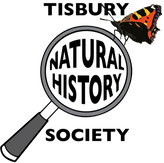


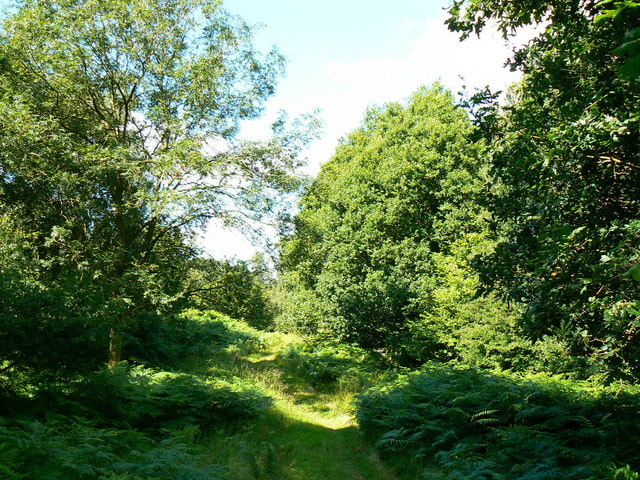
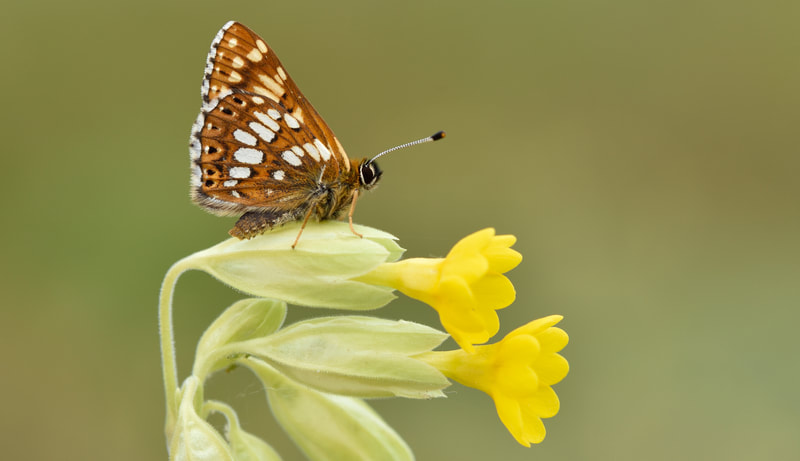
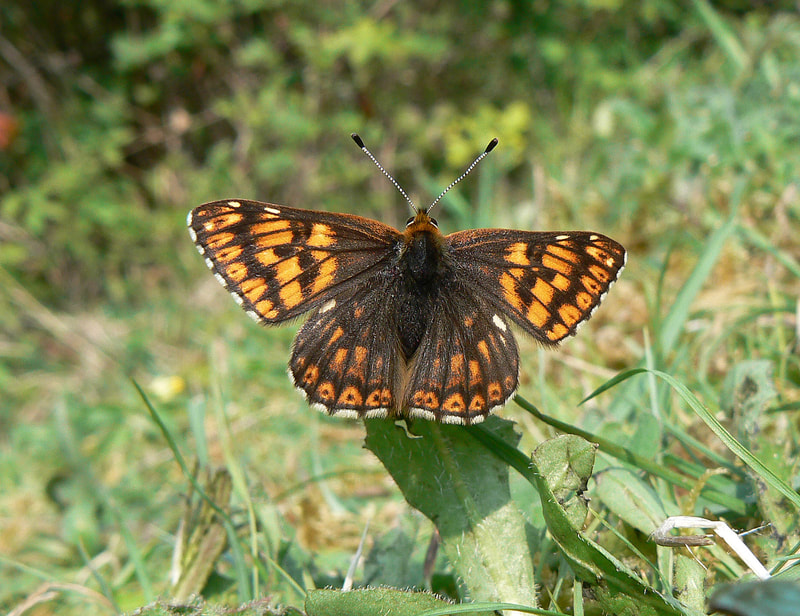
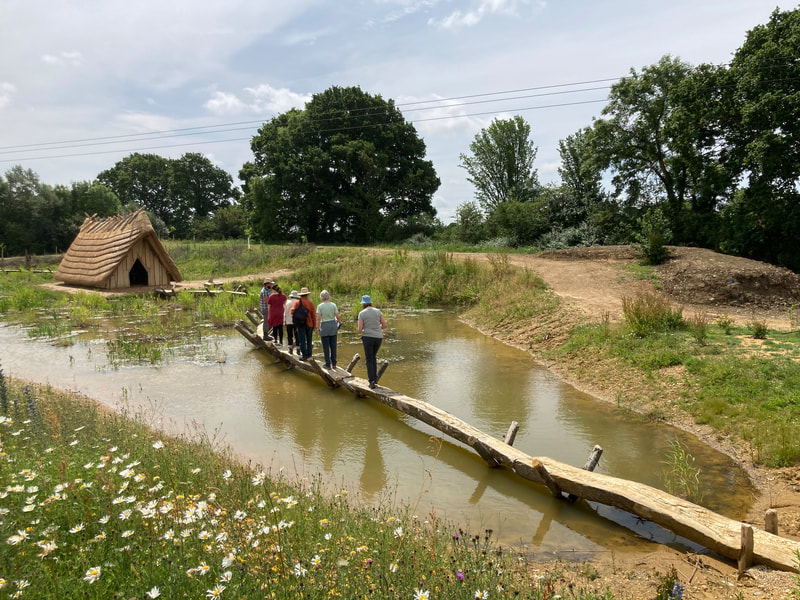
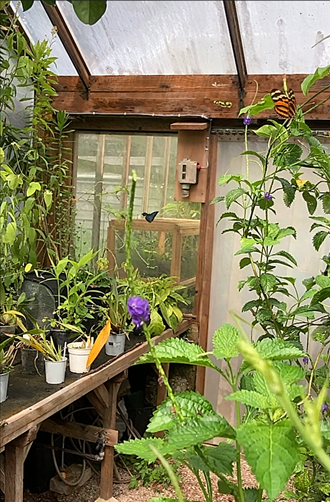
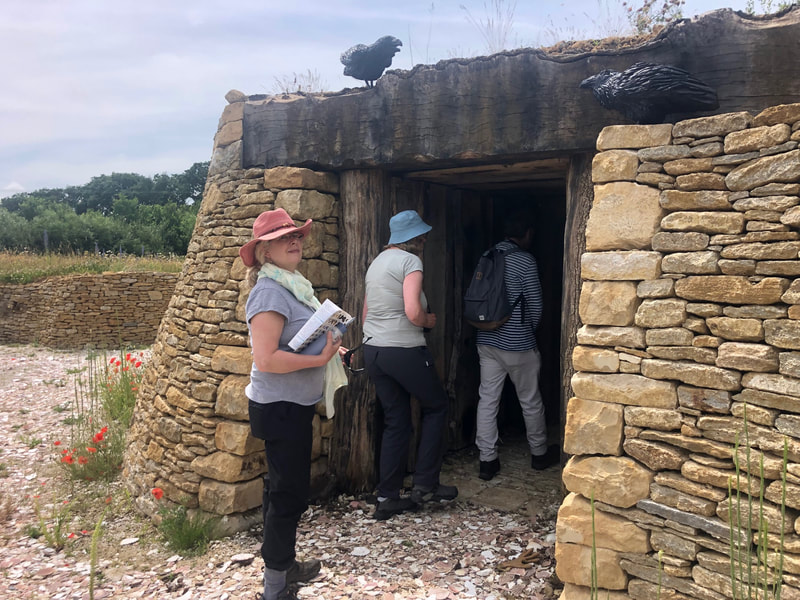
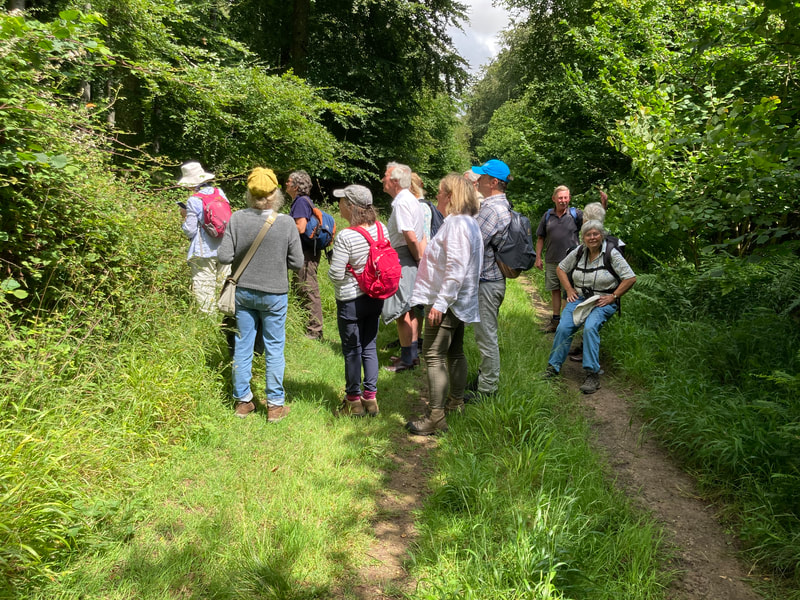
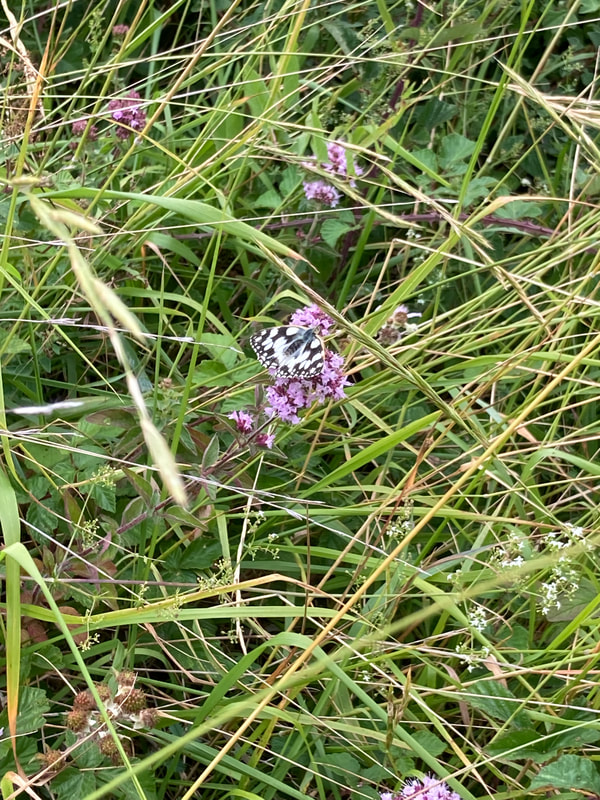
 RSS Feed
RSS Feed